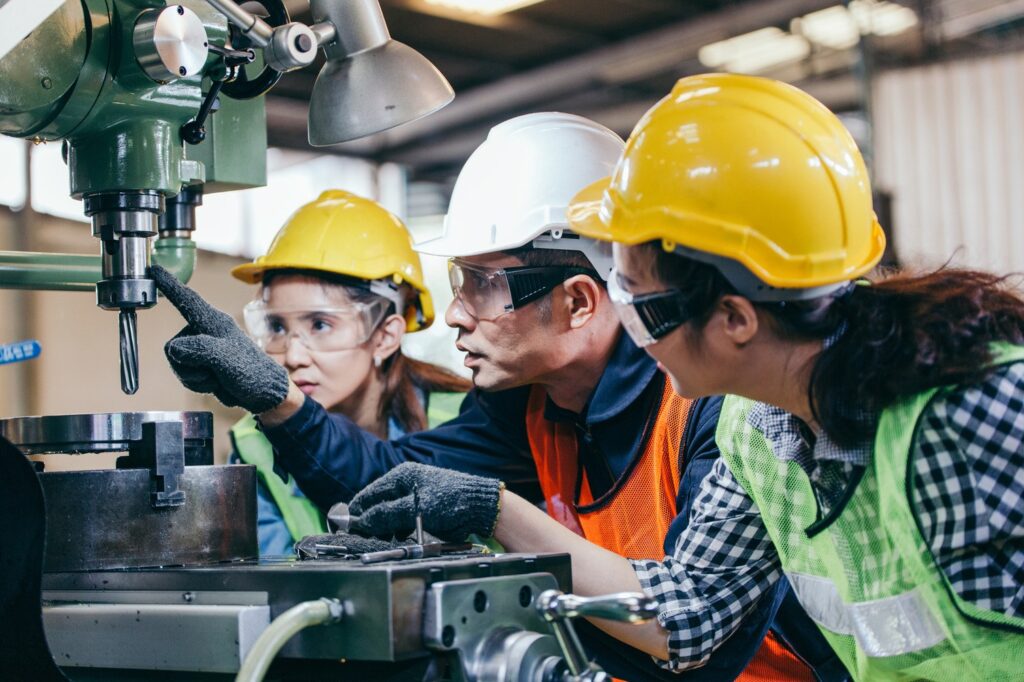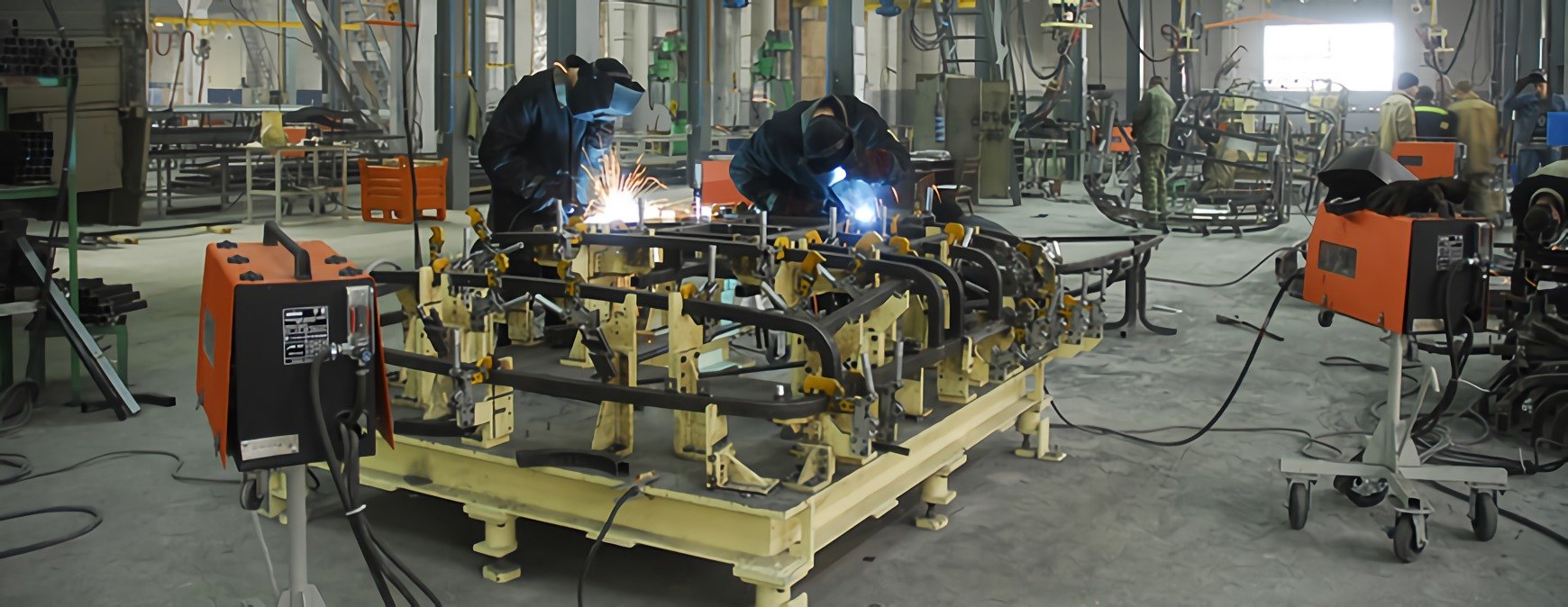TWS is a Great Training Option for Everyone
Learn more about how we can prepare you to advance your career.
Contrary to what you may have heard, manufacturing in America is not dead.
In fact, this sector is thriving, so much so that a shortage of over two million skilled workers is expected over the next decade.[1]
If you’re thinking about becoming a welder or already enrolled in welding training, manufacturing is a sector to watch. It’s the top employer of welders, meaning you could find work in manufacturing when you graduate.
Where are you most likely to land a manufacturing job? Read on to find out.
Have You Considered a Career in the Skilled Trades?
Fill out the form to recieve a no obligation info packet.
The Role of Welders in Manufacturing
“Welding is an essential part of everyday life. From cars to high-rise office buildings, airplanes to rockets, pipelines to highways, none of it would be possible without welding.” -David McQuaid, President of the American Welding Society[2]
Did you know that more than 50 percent of the goods made in the U.S.A. are welded? Many every-day conveniences wouldn’t be possible without welding:
- The cars we drive to work
- The cell phones we text friends with
- The medical devices that keep loved ones healthy[3]
Much of the welding for these products takes place on the factory floor. The manufacturing industry as a whole is the top employer of welders, accounting for 61 percent of welding jobs in 2016, more than any other industry.[4]
Top Employers of Welders in 2016
| Employer | Percentage of Welders Employed |
| Manufacturing | 61 Percent |
| Specialty trade contractors | 7 Percent |
| Self-employed workers | 5 Percent |
| Repair and maintenance | 4 Percent |
| Merchant wholesales, durable goods | 4 Percent |
[5]
Technology’s Impact on Welding Jobs in Manufacturing
Many modern manufacturing jobs are quite different from positions your father or grandfather might have held in the industry years ago.

New: Industrial Maintenance
Learn About Our New Advanced Industrial Maintenance Program in Houston
Tulsa Welding School is proud to announce our newest program offering available at our Houston Campus – Advanced Industrial Maintenance Technology! Learn the skills you need to take on the industries of manufacturing, distribution, energy production and facility maintenance in as few as 7 months.
Thanks to automation, individuals can now find high-tech positions as robotic welder operators in auto manufacturing and other areas of the field.
Another welding trend that has changed the industry is that of wearable technologies: “technologically advanced equipment you physically wear to perform a job.”
Below are some examples of the ways innovation is making manufacturing a less physically strenuous job for those working on the assembly line:
- Mechanical arms to hold heavy tools
- Full-body powered suits to provide extra strength
- Chair-less chairs to offer support and reduce fatigue
Top Cities for Manufacturing in 2019
In recent years, many U.S. companies have brought operations back to the U.S. from foreign countries, a trend known as “reshoring.” The number of jobs that have undergone this process has jumped more than tenfold since 2010.
Rising labor costs in China, manufacturing errors, steep transportation expenses and pledges by major retailers, such as Walmart, to buy more U.S.-made products are some of the reasons for the change.[6]
Where are these companies setting up shop? Financial news and opinion company 24/7 Wall Street recently ranked the top 28 U.S. cities based on the growth in manufacturing employment in the last five years.
Below is a list of manufacturing hubs to watch:
| Ranking | City or Metro Area | Percent Change in Manufacturing Jobs in the last 5 Years |
| 1 | Lewiston, Idaho-Washington | +40.6 percent |
| 2 | Elkhart-Goshen, Indiana | +33.7 percent |
| 3 | Kokomo, Indiana | +30.5 percent |
| 4 | Elizabethtown-Fort Knox, Kentucky | +28.6 percent |
| 5 | Bowling Green, Kentucky | +28.3 percent |
| 6 | Auburn-Opelika, Alabama | +25 percent |
| 7 | Tuscaloosa, Alabama | +23.9 percent |
| 8 | Grand Rapids-Wyoming, Michigan | +21.8 percent |
| 9 | Grants Pass, Oregon | +20.8 percent |
| 10 | Detroit-Warren-Dearborn, Michigan | +19.6 percent |
| 11 | Louisville/Jefferson County, Kentucky-Indiana | +19.2 percent |
| 12 | Kankakee, Illinois | +18.5 percent |
| 13 | Norwich-New London, Connecticut | +18.5 percent |
| 14 | Lake Charles, Louisiana | +18.2 percent |
| 15 | Ogden-Clearfield, Utah | +17.6 percent |
| 16 | Santa Rosa, California | +17.3 percent |
| 17 | Clarksville, Tennessee-Kentucky | +17 percent |
| 18 | Greeley, Colorado | +16.7 percent |
| 19 | Spartanburg, South Carolina | +16.7 percent |
| 20 | Albany, Oregon | +16.2 percent |
| 21 | Vineland-Bridgeton, New Jersey | +16 percent |
| 22 | Merced, California | +15.5 percent |
| 23 | Kalamazoo-Portage, Michigan | +15.4 percent |
| 24 | Morristown, Tennessee | +15.3 percent |
| 25 | Jackson, Michigan | +15.1 percent |
| 26 | Boise City, Idaho | +15 percent |
| 27 | Savannah, Georgia | +14.9 percent |
| 28 | Greenville-Anderson-Mauldin, South Carolina | +14.8 percent |
[7]
Closing the Skills Gap in Welding and Manufacturing
Welding and manufacturing play a vital role in producing essential goods and structures in this country. In the coming years, both fields are expected to need skilled workers, and there are concerns about a skilled trades shortage.
The American Welding Society predicts that by 2025, the country will experience a shortage of more than 400,000 welding operators.[8]
Deloitte, a U.S. company that offers audits, consulting, advisory and tax services for the manufacturing industry, reports that since mid-2017, job openings have been increasing at double-digit rates. Instead of eliminating jobs, the new technologies of artificial intelligence (AI), robotics and the Internet of Things (IoT) are creating them.
But in the midst of the “Fourth Industrial Revolution,” the company reveals there aren’t enough skilled workers, predicting an estimated 2.4 million jobs will go unfilled between 2018 and 2028.[9]
Once again, the nation needs men and women to meet the needs of industry—to play a vital role in “making America”: the products, the transportation and the infrastructure.
Will you be one of them?
[1] https://www2.deloitte.com/us/en/pages/manufacturing/articles/future-of-manufacturing-skills-gap-study.html
[2] https://www.manufacturing.net/blog/2016/04/why-welding-incredibly-important-industry
[3] http://www.careersinwelding.com/welding_fun_facts.php
[4] https://www.bls.gov/ooh/production/welders-cutters-solderers-and-brazers.htm#tab-3
[5] https://www.bls.gov/ooh/production/welders-cutters-solderers-and-brazers.htm#tab-3
[6] https://www.usatoday.com/story/money/business/2018/06/28/manufacturers-bringing-most-jobs-back-to-america/36438051/
[7] https://www.usatoday.com/story/money/economy/2018/10/16/cities-where-manufacturing-making-comeback/38127539/?utm_source=American+Welding+Society&utm_campaign=1422ee32ae-20181018.WelderNewsletter&utm_medium=email&utm_term=0_c2e978a06c-1422ee32ae-429623327
[8] https://www.manufacturing.net/blog/2016/04/why-welding-incredibly-important-industry
[9] https://www2.deloitte.com/us/en/pages/manufacturing/articles/future-of-manufacturing-skills-gap-study.html
This blog has been labeled as archived as it may no longer contain the most up-to-date data. For a list of all current blog posts, please visit our blog homepage at https://www.tws.edu/blog/







